- Home
- C. S. Lewis
On Stories
On Stories Read online
DEDICATION
To Priscilla Collins
this collection of Lewis’s essays is dedicated
by the Trustees of his Estate in token of their
respect and admiration, and in gratitude for
the unfailing support they have enjoyed from
her in the endeavour to fulfil that trust in a
manner worthy of its object.
Owen Barfield
Walter Hooper
CONTENTS
DEDICATION
PREFACE
I. ON STORIES
II. THE NOVELS OF CHARLES WILLIAMS
III. A TRIBUTE TO E. R. EDDISON
IV. ON THREE WAYS OF WRITING FOR CHILDREN
V. SOMETIMES FAIRY STORIES MAY SAY BEST WHAT’S TO BE SAID
VI. ON JUVENILE TASTES
VII. IT ALL BEGAN WITH A PICTURE . . .
VIII. ON SCIENCE FICTION
IX. A REPLY TO PROFESSOR HALDANE
X. THE HOBBIT
XI. TOLKIEN’S THE LORD OF THE RINGS
XII. A PANEGYRIC FOR DOROTHY L. SAYERS
XIII. THE MYTHOPOEIC GIFT OF RIDER HAGGARD
XIV. GEORGE ORWELL
XV. THE DEATH OF WORDS
XVI. THE PARTHENON AND THE OPTATIVE
XVII. PERIOD CRITICISM
XVIII. DIFFERENT TASTES IN LITERATURE
XIX. ON CRITICISM
XX. UNREAL ESTATES
ABOUT THE AUTHOR
ALSO BY C. S. LEWIS
CREDITS
BACK ADS
COPYRIGHT
ABOUT THE PUBLISHER
PREFACE
‘You can’t get a cup of tea large enough or a book long enough to suit me’, said C. S. Lewis; a remark which could almost be used as an epigraph for this short one. He certainly meant what he said, for at that moment I was pouring his tea into a very large Cornish-ware cup and he was reading Bleak House.
The theme of the collection is the excellence of Story. And particularly those kinds of story specially dear to Lewis—fairy tales and science fiction. In the essays printed here the author discusses certain literary qualities which he felt critics overlooked, or, the whirligig of fashion being what it is, dismissed too automatically. When most of the pieces were first published in 1966 under the title Of Other Worlds (with four stories now reprinted in Lewis’s The Dark Tower and Other Stories) the most vocal of the literary critics were encouraging readers to find in literature almost everything, life’s monotony, social injustice, sympathy with the downtrodden poor, drudgery, cynicism, and distaste: everything except enjoyment. Step out of line and you were branded an ‘escapist’. It’s no wonder that so many people gave up taking their meals in the dining-room and moved into the nether parts of the house—as close as they could get to the kitchen sink.
Lewis heard them, stayed where he was, and proved immune to the whole thing. Hence, the most enduring property of this collection lies with those pieces Lewis wrote about his seven Chronicles of Narnia and his science-fiction trilogy. Still, I have no doubt that our literary gaolers would still have us shackled, in the prison-house of their own making, had not Lewis opened the door, struck off our chains, and led us out. But part of Lewis’s effectiveness as liberator lay in the fact that he was familiar with the interior of the gaol-house from his own earlier imprisonment. Let’s consider what put him there and how he escaped.
C. S. Lewis can’t have been more than five or six years old when he wrote, in a notebook he much later passed on to me, a story called ‘To Mars and Back’ and another little romance about chivalrous mice and rabbits riding out in full armour to kill cats. While his interest in romance, particularly of the fantastic and ‘other worldly’ kinds, remained with him all his life, it is perhaps more than coincidence that when his mother died in 1908, though he was only nine years old, his compositions began to reflect more and more the interests and ‘grown-up’ talk of his father, who was a police court solicitor in Belfast.
Lewis was later to say in his autobiography, Surprised by Joy, that what drove him to write was an extreme manual clumsiness owing to the inherited deformity of having only one joint in the thumb. That is one thing. But the evidence of the sheer pleasure he found in writing suggests that this proclivity would have been about as difficult to stifle as it would be to reverse the rotation of the Earth.
Most of the as yet unpublished stories Lewis began when he was about six and continued till he was about fifteen were, at first, about his imaginary world of Animal-Land and the anthropomorphic beasts which inhabit it. In time his elder brother, Warren, selected India as ‘his’ country. Then, in order that it might be a shared world, India was lifted out of its place in the real world and set alongside Animal-Land—the two thus becoming, in time, the single state of Boxen. Soon the maps of Boxen included the principal train and steamship routes—one of Warren’s contributions. The capital city of Murray even had its own newspaper. And so, out of an attic full of commonplace children’s toys and ink pots, there emerged a world almost as consistent and self-sufficient as one finds in Trollope’s Barsetshire novels.
As early legends of King Arthur and his Court grew to include romances of individual knights of the Round Table, so a systematic reading of the Boxen stories—profusely illustrated by Lewis’s pen and covering over seven hundred years—reveals a similar kind of growth. The young lad’s interest was, at first, that of a historian of Boxen: as time went on he turned to writing novels and biographies in which the principal characters spring into prominence. Lewis’s masterpiece is Lord John Big. This noble frog is already the Little-Master, i.e., the Prime Minister, when we meet him in ‘Boxen: Or Scenes from Boxonian City Life’ (written in 1912). Later he has his own biography: ‘The Life of Lord John Big of Bigham’ in three ‘volumes’ or exercise books, composed in 1913.
There is much to admire about Boxen. Lord Big is a frog of immense personality, and I find him almost as unforgettable as Reepicheep the Mouse and Puddleglum the Marsh-wiggle of the Narnian stories (who were, as Lewis told me, his favourites). There is nothing to suggest that the author had to labour to find ‘filling’ for his carefully constructed plots. And the humour, though more constrained than that we find in the works he wrote years later, is unmistakably of the Lewis kind. He had been training himself, without knowing it, to be a novelist.
But, as Lewis himself admitted in Surprised by Joy, Boxen is empty of poetry and romance. I think it might astonish the reader of the Narnian books to know just how prosaic it is. In fairness, it ought to be pointed out that this was partly intentional, for as Lewis was later to say: ‘When I began writing stories in exercise books I tried to put off all the things I really wanted to write about till at least the second page—I thought it wouldn’t be like a grown-up book if it became interesting at once.’1 Most of all, the Boxen stories are blighted by, of all things, politics—something which Lewis came to detest in later life. It did, after all, hold him so long in bondage. The characters in ‘Scenes from Boxonian City Life’ all relish a place in the ‘Clique’, though none of them—and certainly not the author—appears to have any clear idea what a clique is. This is not surprising, for as Lewis wanted his characters to be ‘grown up’, he naturally interested them in what he knew to be ‘grown-up’ affairs. And politics, as both Lewis and his brother told me, was a topic they heard a great deal of from their father and his contemporaries.
As Boxen came to an end, there began what Lewis was to look back upon as the happiest period of his life. It started in the autumn of 1914 when he was sent to Little Bookham in Surrey to be ‘crammed’ for Oxford by an old family friend, W. T. Kirkpatrick. A rationalist, Kirkpatrick, almost certainly without any intention of doing so, strengthened the atheistic beliefs Lewis already held. Coincidental with his going to
Little Bookham, Lewis met a Belfast neighbour, Arthur Greeves, who was to become his life-long friend and, after Warren, his closest confidant—the perfect sharer of his taste in literature. One has only to glance through Lewis’s weekly exchange of letters with Arthur2 to see the growth of his imagination as it revels in the vigour of legend in Malory’s Morte d’Arthur, William Morris’s The Well at the World’s End, and George MacDonald’s Phantastes, which work was to become for Lewis almost the ideal of what a romance should be and one which he claimed ‘baptised’ his imagination. This ‘baptism’ was not seen to be such at the time, and the ‘holiness’ he found in Phantastes and other works of MacDonald took some years to find its way through Lewis’s truculent resistance to Christianity. What Lewis was passionately interested in sharing with Arthur was the kind of stories which were weird, fantastic, beautiful, expressions of great ‘myths’—and most decidedly not those concerned with ‘everlasting problems’—by which he meant all that goes under the undeserved name of ‘realism’.
Lewis’s first term in Oxford, his brief friendship with a fellow member of the Officers’ Training Corps, Paddy Moore, which led to his promise to look after Paddy’s mother should he survive the trenches of France during World War I, his return to Oxford after the war (in which Paddy was killed), and his ‘adoption’ of Mrs Moore—all are sufficiently dealt with in They Stand Together and C. S. Lewis: A Biography.3 What concerns us here are the events which caused Lewis to shift this way and that until he emerged as the author of the kind of stories he liked so much, but which he eventually had to write himself.
As far back as 1912, when he lost his belief in Christianity, Lewis became subject to an occasional attraction to and repulsion from the occult. During his undergraduate years at Oxford; while sharing accommodations with his adopted mother Mrs Moore, he met two people who caused him to recoil. One of them was an ‘old, dirty, gabbling, tragic Irish parson’ in whom a ‘ravenous desire for personal immortality co-existed . . . with (apparently) a total indifference to all that could, on a sane view, make immortality desirable’.4 The other, once a practising psychoanalyst, was a close connection whom Lewis spent weeks nursing, and who had been driven mad from ‘flirting with Theosophy, Yoga, Spiritualism, Psychoanalysis, what not?’5 Lewis liked both men. However, the corrupting influence of Spiritualism on them, the ‘New Psychology’ which was causing many people to become foolishly and cheaply introspective—all this decided Lewis against anything that wavered towards the occult. His repulsion is evident in his diary. Looking for something to steady his mind, he recorded on the 19th January 1927 the reassurance he found in turning back to the poetry of Wordsworth: ‘That’s the real imagination, no bogies, no Karmas, no gurus, no damned psychism there. I have been astray among second rate ideas too long.’ Thereafter Lewis shunned all thoughts about immortality and even all that sort of romanticism which had once been one of the chief pleasures and concerns of his life.
Until, that is, he came under the altogether benign influence of a fellow don at Oxford, Professor J. R. R. Tolkien. Not only was Tolkien a Christian, but, as Lewis explained in a letter to Greeves, one of the human carriers of the Faith to him. The actual event took place on the evening of the 19th September 1931, when Lewis, Tolkien, and another friend, Hugo Dyson, were up all night discussing ‘myth’ and its relation to the revelation of God in Christ. Tolkien, like Lewis, had long feasted on ancient myths, particularly those of Norse origin. The difference between them was that while Lewis defined myths as ‘lies breathed through silver’, Tolkien—already at work on his vast invented world of Middle Earth—believed in the inherent truth of mythology. ‘Just as speech is invention about objects and ideas’, he said to Lewis that same evening, ‘so myth is invention about truth. We have come from God, and inevitably the myths woven by us, though they contain error, will also reflect a splintered fragment of the true light, the eternal truth that is with God. Indeed only by myth-making, only by becoming a “sub-creator” and inventing stories, can Man ascribe to the state of perfection that he knew before the Fall.’6
This was to be one of the biggest shakings up Lewis had ever known, and thereafter as much a part of his philosophy and theology as it was of Tolkien’s. Indeed, so immediate was the impression, that Lewis in his account of it to Greeves on the 18th October 1931 was able to admit that the ‘story of Christ is simply a true myth: a myth working on us in the same way as the others, but with this tremendous difference that it really happened.’
Whether the reader of Lewis’s books is or is not a Christian, it ought to be said here that Lewis’s conversion just was the chief watershed in his life. There was no nook or cranny of his being that it did not eventually reach and transform. Without it I am confident that he would never have become the good and great man he was. That he would have been a writer of some note was already evident: but without the conversion his one-time rampant ambition would not have been enough. I do not know about others. But for Lewis and his ambition, it was very like a man living with a beast with only enough food for one. And the beast wants it all. As it turned out, First Things found their proper place and secondary things remained where they should.
And where, in literature, should First Things be put? As expected, Lewis placed his reliance on imaginary worlds. A long-time admirer of what used to be called ‘scientifiction’, he felt it a serious defect that most stories of ‘other worlds’ should be used as vehicles for exalting some of man’s most selfish tendencies. It was to be some time before he created anything like a ‘mythology’ of his own, but we have it on his own authority that his interplanetary romances and his Narnian stories all began with ‘seeing pictures’ in his mind. Never, he claims, did he begin with a ‘message’ or a ‘moral’, but that these things pushed their own way in during the process of writing.
Lewis was at the time of that momentous conversation with Tolkien at work on The Allegory of Love: A Study in Medieval Tradition. My guess is that some of the mental ‘pictures’ which were later to lead him to write a story set on Mars—Out of the Silent Planet—may have resulted from his study of Bernardus Silvestris’s rare twelfth-century account of creation, De Mundi Universitate.7 I see from his carefully annotated copy, now in my possession, that he finished reading it on the 4th August 1930. That he was impressed by Bernardus’s mention of the ‘Oyarses’—the ruling essence or tutelary Spirit of a planet—is evident from his extensive marginalia. In any case, wishing to know more about the ‘Oyéresu’ (Lewis’s name for more than one Oyarses) and their relation to allegory as it was to be defined in The Allegory of Love, he wrote—probably shortly after the talk with Tolkien—to C. C. J. Webb, a former professor of the philosophy of the Christian religion. Professor Webb was fascinated by medieval problems and in his reply of the 31st October 1931 (still in Lewis’s copy of the book) he pointed out that ‘Oyarses’ was a corruption of Ousiarches, as found in Pseudo-Apuleius’s Asclepius (xix). Those who have read The Allegory of Love will find a mention of the author’s debt to Webb in the appendix on ‘Genius and Genius’. And those who have not will presumably have met Lewis’s beautifully imagined planetary Intelligences or Archangels in his Out of the Silent Planet, indeed, in chapter XXII, under the guise of fiction, there are specific references to the Oyarses of Bernardus, as well as one ‘C. J.’, who is of course C. C. J. Webb.
Lewis’s completion of The Allegory of Love in 1935 coincided almost exactly with his discovery of David Lindsay’s Voyage to Arcturus (1920). Most people are put off by Lindsay’s ghastly and unhallowed story. Lewis himself thought that it was on the borderline of the diabolical, but he was immensely grateful for what he learned from it. Writing to Ruth Pitter, the poet, on the 4th January 1947, he said: ‘From Lyndsay I first learned what other planets in fiction are really good for; for spiritual adventures. Only they can satisfy the craving which sends our imaginations off the Earth. Or putting it another way, in him I first saw the terrific results produced by the union of the kinds of fiction hith
erto kept apart: the Novalis, G. Macdonald, James Stephens sort and the H. G. Wells, Jules Vernes sort. My debt to him is very great.’
I can hear the shrill voices of some for whom Lewis has become a ‘subject’ rather than a superb story-teller reminding me that he paid other tributes to Lindsay’s book and that he cited other reasons for writing the first of his interplanetary novels. Well, so he did. But to my mind this only confirms what he wrote in ‘It All Began with a Picture . . .’ about the inspiration behind some of his fiction. ‘I don’t believe’, he said, ‘anyone knows exactly how he “makes things up”. Making up is a very mysterious thing. When you “have an idea” could you tell anyone exactly how you thought of it?’
The mistake is to suppose that Lewis was under the most compelling oath to tell ‘exactly how it happened’, after he has already confessed that he cannot speak with such exactness. It is clear that when he did try to account for the different impulses which went into his story-writing one factor seemed specially vivid at one time, another specially vivid at some other—that all throw light on this mysterious process of ‘inspiration’. It is better to see them as parts of a whole rather than contradictions of one another.
For instance, in replying to Roger Lancelyn Green’s inquiry about the impetus behind Out of the Silent Planet, Lewis said in a letter of the 28th December 1938: ‘What immediately spurred me to write was Olaf Stapledon’s Last and First Men and an essay [‘The Last Judgement’] in J. B. S. Haldane’s Possible Worlds, both of which seems to take the idea of such travel seriously and to have the desperately immoral outlook which I try to pillory in Weston. I like the whole planetary idea as a mythology and simply wished to conquer for my own (Christian) point of view what has always been used by the opposite side.’
Further light is shed by his answer to Sister Penelope of the 9th August 1939 in which he wrote: ‘What set me about writing the book was the discovery that a pupil of mine took all that dream of interplanetary colonisation quite seriously, and the realisation that thousands of people in one form or another depend on some hope of perpetuating and improving the human species for the whole meaning of the universe—that a “scientific” hope of defeating death is a real rival to Christianity. . . . I believe this great ignorance might be a help to the evangelisation of England: any amount of theology can be smuggled into people’s minds under cover of romance without their knowing it.’

 The Lion, the Witch, and the Wardrobe
The Lion, the Witch, and the Wardrobe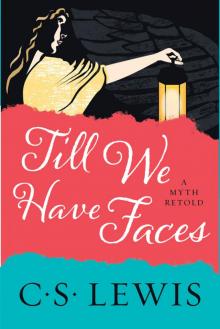 Till We Have Faces
Till We Have Faces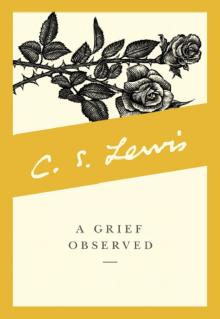 A Grief Observed
A Grief Observed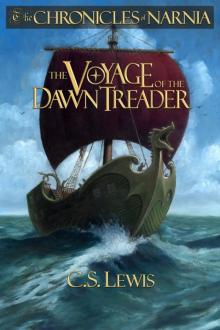 The Voyage of the Dawn Treader
The Voyage of the Dawn Treader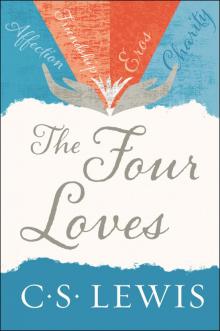 The Four Loves
The Four Loves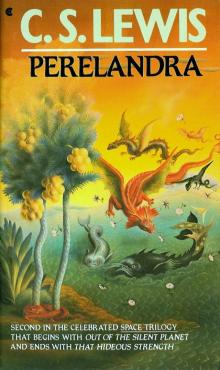 Perelandra
Perelandra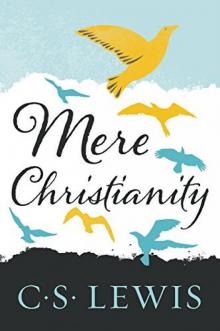 Mere Christianity
Mere Christianity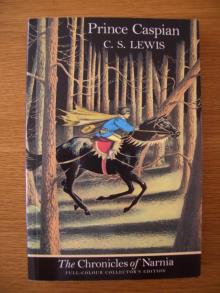 Prince Caspian
Prince Caspian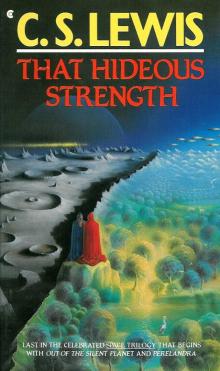 That Hideous Strength
That Hideous Strength The Magicians Nephew
The Magicians Nephew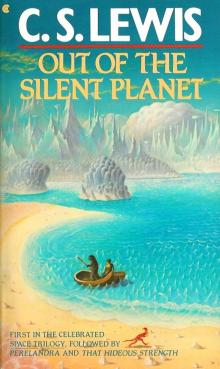 Out of the Silent Planet
Out of the Silent Planet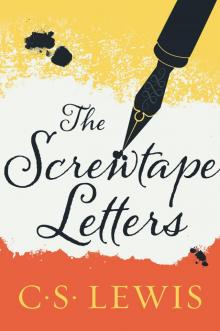 The Screwtape Letters
The Screwtape Letters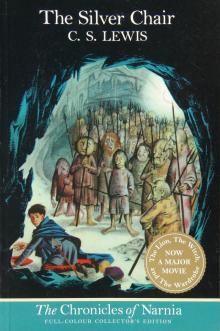 The Silver Chair
The Silver Chair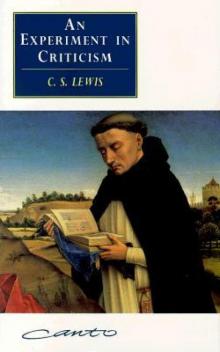 An Experiment in Criticism
An Experiment in Criticism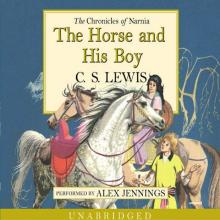 The Horse and His Boy
The Horse and His Boy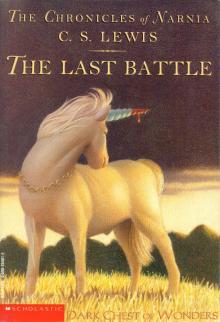 The Last Battle
The Last Battle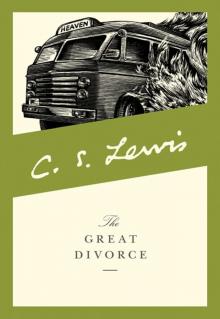 The Great Divorce
The Great Divorce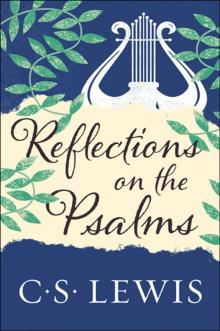 Reflections on the Psalms
Reflections on the Psalms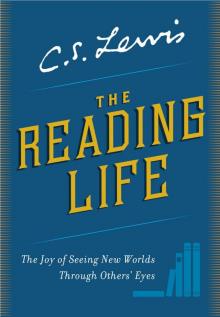 The Reading Life
The Reading Life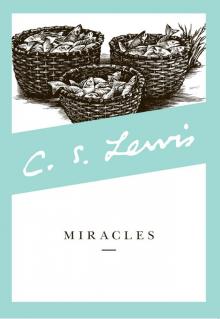 Miracles
Miracles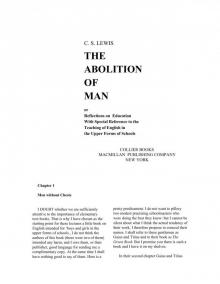 Lewis new
Lewis new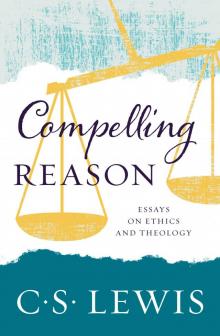 Compelling Reason
Compelling Reason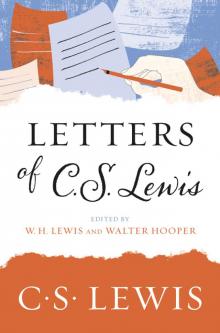 Letters of C. S. Lewis
Letters of C. S. Lewis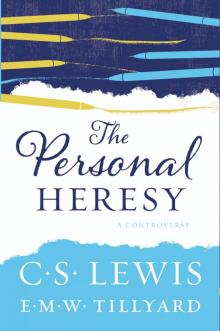 The Personal Heresy
The Personal Heresy The Lion, The Witch And The Wardrobe
The Lion, The Witch And The Wardrobe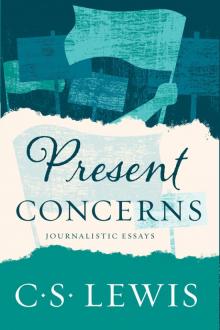 Present Concerns
Present Concerns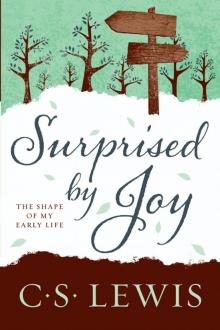 Surprised by Joy
Surprised by Joy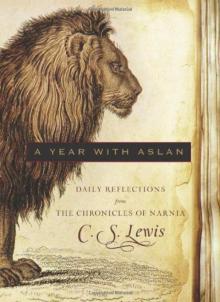 A Year with Aslan: Daily Reflections from The Chronicles of Narnia
A Year with Aslan: Daily Reflections from The Chronicles of Narnia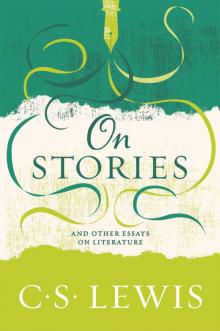 On Stories
On Stories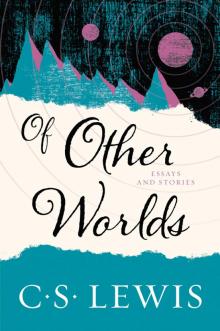 Of Other Worlds
Of Other Worlds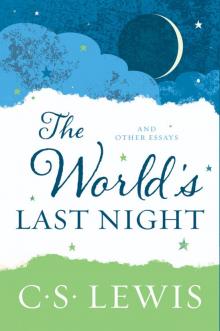 The World's Last Night
The World's Last Night The Discarded Image
The Discarded Image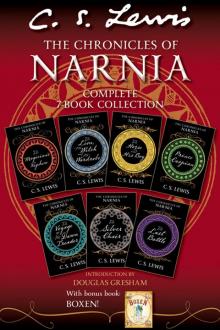 The Chronicles of Narnia Complete 7-Book Collection with Bonus Book
The Chronicles of Narnia Complete 7-Book Collection with Bonus Book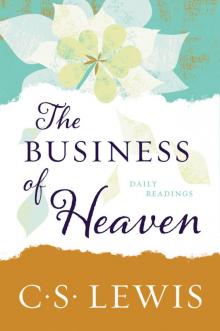 The Business of Heaven
The Business of Heaven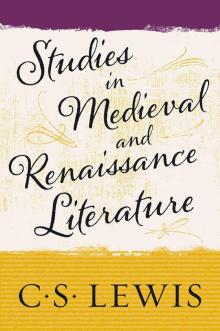 Studies in Medieval and Renaissance Literature
Studies in Medieval and Renaissance Literature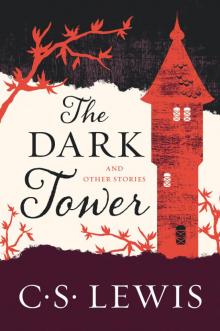 The Dark Tower
The Dark Tower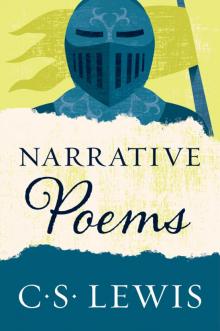 Narrative Poems
Narrative Poems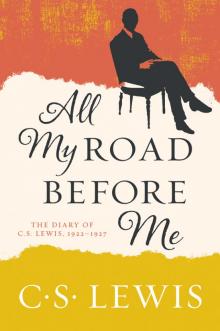 All My Road Before Me
All My Road Before Me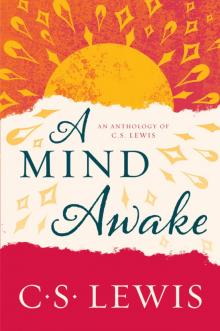 A Mind Awake
A Mind Awake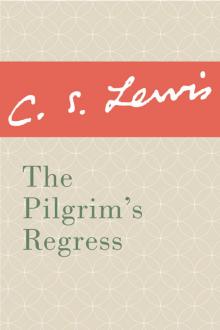 The Pilgrim's Regress
The Pilgrim's Regress